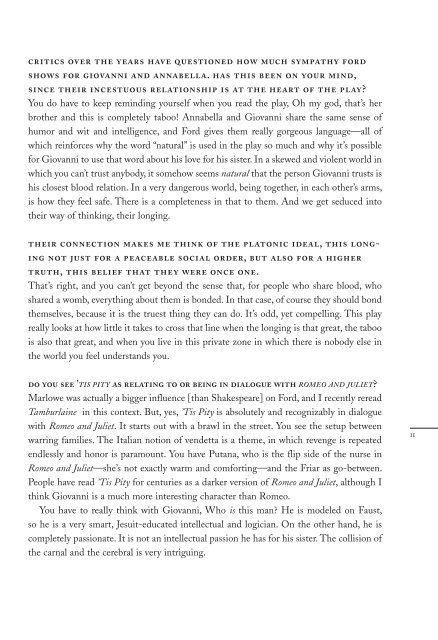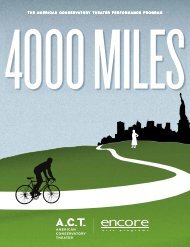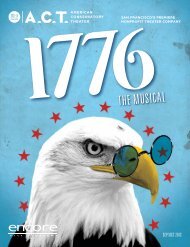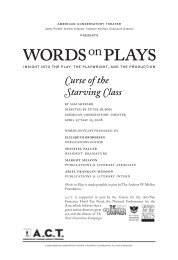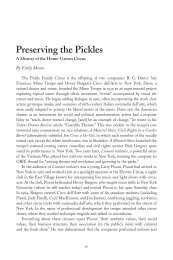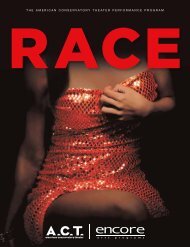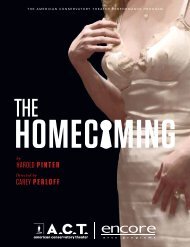'Tis Pity She's a Whore - American Conservatory Theater
'Tis Pity She's a Whore - American Conservatory Theater
'Tis Pity She's a Whore - American Conservatory Theater
You also want an ePaper? Increase the reach of your titles
YUMPU automatically turns print PDFs into web optimized ePapers that Google loves.
critics over the years have questioned how much sympathy ford<br />
shows for giovanni and annabella. has this been on your mind,<br />
since their incestuous relationship is at the heart of the play?<br />
You do have to keep reminding yourself when you read the play, Oh my god, that’s her<br />
brother and this is completely taboo! Annabella and Giovanni share the same sense of<br />
humor and wit and intelligence, and Ford gives them really gorgeous language—all of<br />
which reinforces why the word “natural” is used in the play so much and why it’s possible<br />
for Giovanni to use that word about his love for his sister. In a skewed and violent world in<br />
which you can’t trust anybody, it somehow seems natural that the person Giovanni trusts is<br />
his closest blood relation. In a very dangerous world, being together, in each other’s arms,<br />
is how they feel safe. There is a completeness in that to them. And we get seduced into<br />
their way of thinking, their longing.<br />
their connection makes me think of the platonic ideal, this longing<br />
not just for a peaceable social order, but also for a higher<br />
truth, this belief that they were once one.<br />
That’s right, and you can’t get beyond the sense that, for people who share blood, who<br />
shared a womb, everything about them is bonded. In that case, of course they should bond<br />
themselves, because it is the truest thing they can do. It’s odd, yet compelling. This play<br />
really looks at how little it takes to cross that line when the longing is that great, the taboo<br />
is also that great, and when you live in this private zone in which there is nobody else in<br />
the world you feel understands you.<br />
do you see ’TiS PiTY as relating to or being in dialogue with ROmeO AND juLieT?<br />
Marlowe was actually a bigger influence [than Shakespeare] on Ford, and I recently reread<br />
Tamburlaine in this context. But, yes, ’Tis <strong>Pity</strong> is absolutely and recognizably in dialogue<br />
with Romeo and Juliet. It starts out with a brawl in the street. You see the setup between<br />
warring families. The Italian notion of vendetta is a theme, in which revenge is repeated<br />
endlessly and honor is paramount. You have Putana, who is the flip side of the nurse in<br />
Romeo and Juliet—she’s not exactly warm and comforting—and the Friar as go-between.<br />
People have read ’Tis <strong>Pity</strong> for centuries as a darker version of Romeo and Juliet, although I<br />
think Giovanni is a much more interesting character than Romeo.<br />
You have to really think with Giovanni, Who is this man? He is modeled on Faust,<br />
so he is a very smart, Jesuit-educated intellectual and logician. On the other hand, he is<br />
completely passionate. It is not an intellectual passion he has for his sister. The collision of<br />
the carnal and the cerebral is very intriguing.<br />
11


